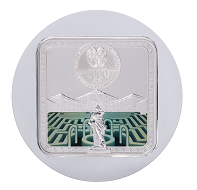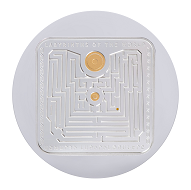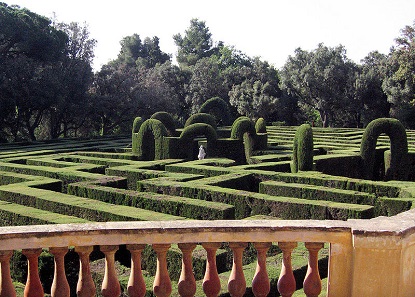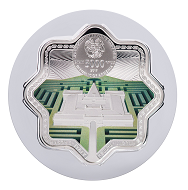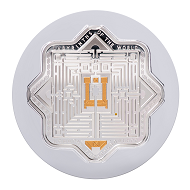June 15, 2017 – The Lithuanian Mint introduces an innovative collector coin series which is dedicated to some of the most spectacular labyrinths from all over the world – ‘Boston Labyrinth’ (USA), ‘Vaals Labyrinth’ (The Netherlands), ‘Barcelona Labyrinth’ (Spain) and ‘Masone Labyrinth’ (Italy).
This year, on 30th of May, Central Bank of Armenia is putting into circulation the last two coins from the series – ‘Barcelona Labyrinth’ and ‘Masone Labyrinth’. The first two coins dedicated to ‘Boston’ and ‘Vaals Labyrinths’ were issued in the end of 2016.
These coins – ‘Barcelona Labyrinth’ and ‘Masone Labyrinth’ – are not only symbols of national identity, rich cultural heritage and significance of Art. They have a unique feature – a gilded ball rolling through the labyrinth’s trails. It’s quite a challenge to make the ball roll right to the center, but some manage to do it really quickly. It’s worth a try.
Barcelona Labyrinth: Armenia / 5000 dram / Silver .925 / 62.2g / Design: Giedrius Paulauskis / Mintage: 1500.
Barcelona Labyrinth
The obverse of the coin depicts the Barcelona labyrinth and the statue to Eros.
On the reverse of the coin you can find a contour of the Barcelona labyrinth with a pool at the entrance and a platform in the center, and the gilded ball rolling through the labyrinth’s trails.
The Barcelona Labyrinth. Photo: Till F. Teench / Wikimedia Commons / CC BY-SA 2.5
The Barcelona labyrinth with its spacious park (Parc del Laberint d’Horta) is located in Barcelona’s Horta-Guinardó district, Spain. The park was established in 1791 when the Desvalls family planted many cypress trees in their estate. Later, an architect Elies Rogent expanded the park by adding flowerbeds, pavilions, waterfalls and canals. The park also holds temples, grottoes and high reliefs, dedicated to the Greek mythological heroes. The Barcelona labyrinth is created on the basis of the Greek myth “Theseus and the Minotaur” and portrays the Minotaur’s castle. At the entrance of the labyrinth one can see a spherical obelisk symbolizing the Ariadne’ thread, whereas to the center there is a statue to Eros, the god of love, which stands as a sign of overcoming the labyrinth. The Barcelona labyrinth was fully renovated by the EU funding assistance and along with the surrounding park was given the status of a park museum. At present it is a renowned cultural center.
Masone Labyrinth: Armenia / 5000 dram / Silver .925 / 62.2g / Design: Giedrius Paulauskis / Mintage: 1500.
Masone Labyrinth
The obverse of the coin depicts the Masone labyrinth and the pyramid-shaped chapel. On the reverse you can find a contour of the Masone labyrinth with the platform in the center, and the gilded ball rolling through the labyrinth’s trails.
The Masone labyrinth is located in one of the nearby settlements of Parma, Italy. It was created by Italian publisher and designer Franco Maria Ricci, in 2015. Around 200 000 bamboo plants in dense rows make the walls of the labyrinth. There is a platform in the center of the labyrinth which is surrounded by buildings and leads visitors to the pyramid-shaped chapel and the art museum of the Renaissance period. The labyrinth is built on the basis of the octagonal star-like “ideal city” project, which was conceived and developed by Italian architect Antonio Filarete back in the 15th century. The idea of building the “ideal city” was called to confront the medieval traditions of irregular town building and to ensure peaceful coexistence of citizens. The Masone labyrinth hosts many art lovers. It is a well-known cultural center where concerts and exhibitions are in routine.
On the Mint’s website, you can find more information on these coins here and here.
The official webpage of the Parc del Laberint d’Horta can be found here.
And to learn more about the Labirinto della Masone, please click here.





